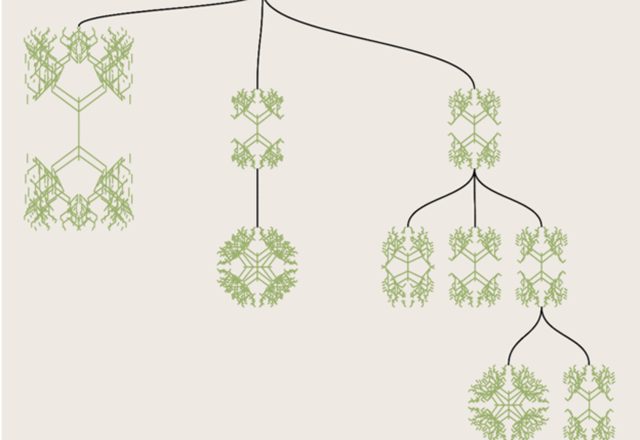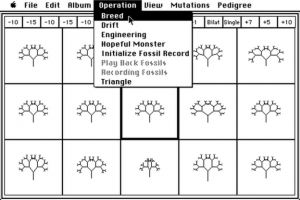Resurrection of the biomorphs
“ The biomorph experiment was one of the first ‘apps’ that demonstrated the fundamentals of evolution as described by Darwin. It’s sad to think what else we may have lost on the way”
Medical Director, PRAESENTIA
It’s interesting to think what has been lost since the internet began. It has been 30 years since Richard Dawkins published ‘The Blind Watchmaker’ and then went on to write his biomorph algorithm to demonstrate evolution in action. These were let loose upon the public at the inaugural Artificial Life conference at Los Alamos in New Mexico in 1987. Back then we hadn’t set the standards that the internet and the world wide web would grow by and the biomorph programme (having been written in Pascal) fell foul of being in the ‘wrong standard’. It was lost but now Penguin has brought the critters back.
The original biomorph programme became obsolete with the march of new emerging standards, having been written in Pascal (Source: Richard Dawkins)
The biomorph programme allowed the user to start with small stick creatures and through selective evolution, by choosing the father and mother of the next generation, ultimately ending up with something that resembled an insect. 20 years later having read D’Arcy Thompson’s book ‘on growth and form‘, Dawkins developed a similar programme for evolving shells. Thompson’s book described how three indices plotted inside a cube described any shell structure. Penguin to celebrate the relaunch of three of Dawkins’s key books; The Blind Watchmaker, Climbing Mount Improbable and Unweaving the Rainbow have also resurrected the shell algorithm along with the biomorphs. This can be found at www.mountimprobable.com. The website allows the user to enter a special competition, to create their own biomorph or shell.
The programmes and the books are still valid today as when they were first launched. The biomorph experiment was one of the first ‘apps’ that demonstrated the fundamentals of evolution as described by Darwin. It’s sad to think what else we may have lost on the way.
Reference(s)
- http://www.mountimprobable.com/ (accessed 13th June 2016)
- Millions of new solar system objects to be found...on June, 2025 at 1:34 am
Astronomers have revealed new research showing that millions of new solar system objects are likely to be detected by a brand-new facility, which is expected to come online later this year.
- Tea, berries, dark chocolate and apples could...on June, 2025 at 3:50 pm
New research has found that those who consume a diverse range of foods rich in flavonoids, such as tea, berries, dark chocolate, and apples, could lower their risk of developing serious health conditions and have the potential to live longer.
- Being in nature can help people with chronic back...on June, 2025 at 3:50 pm
Researchers asked patients, some of whom had experienced lower back pain for up to 40 years, if being in nature helped them coped better with their lower back pain. They found that people able to spend time in their own gardens saw some health and wellbeing benefits. However, those able to immerse […]
- Scientists say next few years vital to securing...on June, 2025 at 3:50 pm
Collapse of the West Antarctic Ice Sheet could be triggered with very little ocean warming above present-day, leading to a devastating four meters of global sea level rise to play out over hundreds of years according to a new study. However, the authors emphasize that immediate actions to reduce […]
- First direct observation of the trapped waves...on June, 2025 at 3:50 pm
A new study has finally confirmed the theory that the cause of extraordinary global tremors in September -- October 2023 was indeed two mega tsunamis in Greenland that became trapped standing waves. Using a brand-new type of satellite altimetry, the researchers provide the first observations to […]
- DNA floating in the air tracks wildlife, viruses...on June, 2025 at 3:48 pm
Environmental DNA from the air, captured with simple air filters, can track everything from illegal drugs to the wildlife it was originally designed to study.





